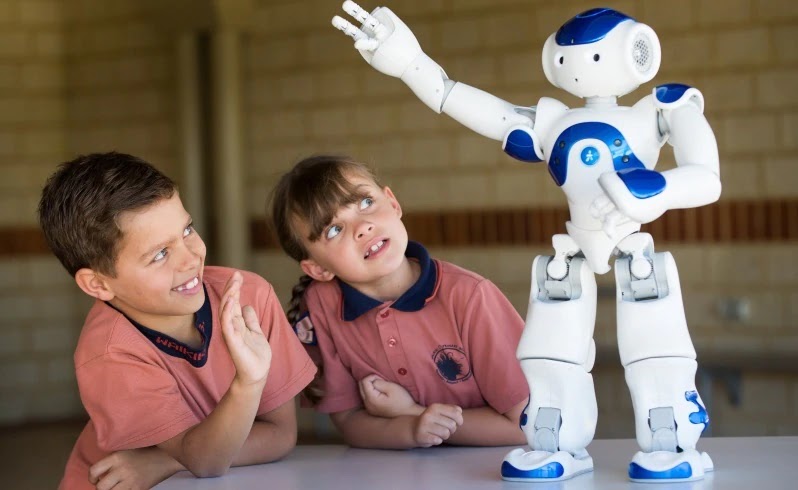Educational robots are robot products, sets or loose parts specially developed by manufacturers with the goal of stimulating students’ interest in learning and cultivating students’ comprehensive abilities. Besides the robot body itself, Gewu Stein indicates that there are corresponding control software and teaching textbooks, etc. Educational robots have adapted to the new curriculum and played a positive role in cultivating and improving students’ scientific literacy. They have been promoted in many primary and secondary schools and have become an inevitable trend. Robot education has become a new curriculum in the field of primary and secondary education. Educational robots will become a trend in the future. Today’s society needs talents with innovative consciousness and creative thinking, and this is even more so in the future society. From birth to adolescence is known as the enlightenment education stage of children. During this period, children are highly malleable, so parents need to educate their children more attentively and do a good job in their children’s enlightenment. Intelligent robots can be good helpers for enlightenment education and are of great help in improving children’s language ability, enhancing children’s quality-oriented education and developing good habits. Therefore, if you want your children to win at the starting line, you need to have an intelligent educational robot.

In recent years, open-source hardware and graphical programming education have had a relatively good popularization foundation in primary and secondary schools. Expanding the knowledge points and simple applications of artificial intelligence at the implementation level does not present much difficulty. However, artificial intelligence is clearly different from the existing technical courses that focus on tool learning and skill mastery. It integrates numerous disciplines such as cognitive science, computer science, electronics technology, and data science, determining the prominent feature of primary and secondary school artificial intelligence education in cultivating students’ comprehensive thinking literacy, and is also one of the important bases for carrying out popular education in artificial intelligence. The perspective of basic education thinking literacy in artificial intelligence focuses on cultivating students’ abilities in structured and generalized thinking expressions such as raising questions, conceiving conceptual prototypes, proposing different solutions, seeking creative approaches, and social rationality. These qualities include computational thinking, creative thinking, design thinking, etc. Taking creative thinking as an example, the results of artificial intelligence solving problems are diverse. For example, there are methods such as fingerprints, faces, irises, palm prints, and voice prints for identity recognition. It is difficult to say which solution is definitely good or bad. Among them, although contact fingerprint recognition is accurate, it is inconvenient, while facial recognition has the risk of incorrect unlocking. How to make machines solve problems more intelligently? Different students have different understandings, and from the students’ perspective, many different solutions will be designed. Design thinking encourages students to consider problems from the conditions of users, usage scenarios, and task backgrounds. Therefore, different design results and solutions will be obtained.

To sum up, the domestic education system has long been dominated by exam-oriented education and mechanized teaching models. Children study to cope with exams, and school teachers teach to cope with work, while neglecting what kind of talents the society really needs. This leads to students having no concept of technology, and parents believing that children learning technological knowledge is not helpful for their children’s future. This misunderstanding is undoubtedly lamentable for the development of a country, and for educators who shoulder the heavy responsibility of cultivating talents for the country, it is undoubtedly necessary to reflect.
